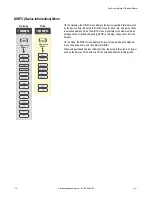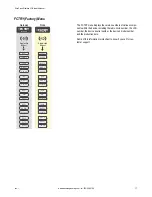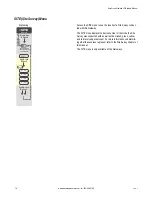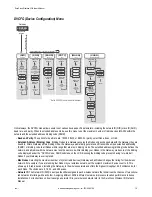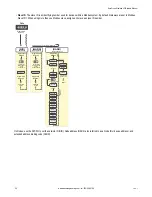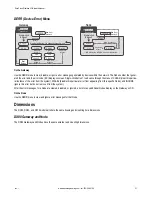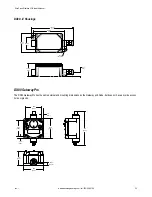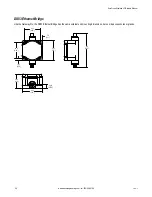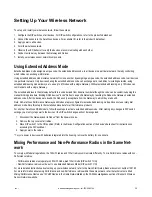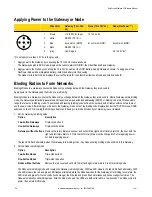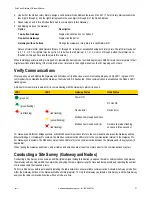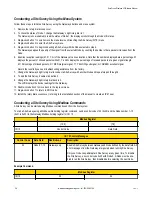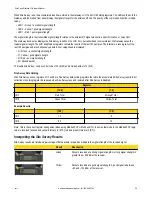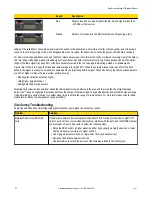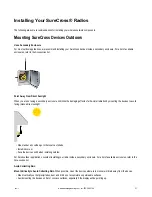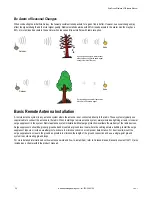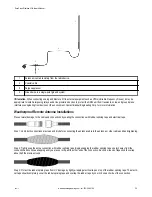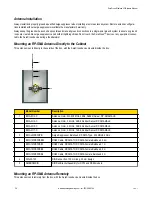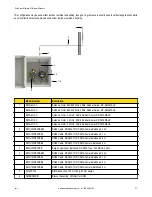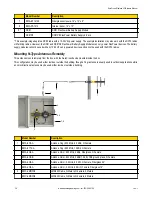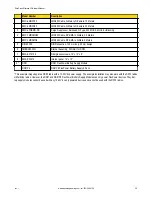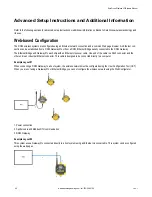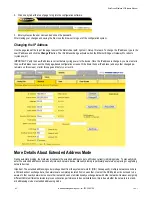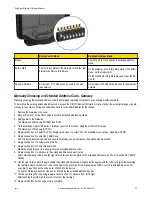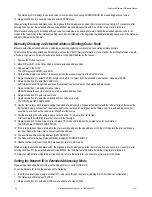
Result
Description
Red
Packets received at a weak signal strength. A weak signal is less than
−100 dBm at the receiver.
Missed
Packets not received on the first transmission and requiring a retry.
Judging if the reliability of a network’s signal meets the needs of the application is not simply a matter of green, yellow, and red packets
received. In normal operating mode, when data packets are not received, the transmitter re-sends the packet until all data is received.
For slow monitoring applications such as a tank farm, where data is required in terms of seconds or minutes, receiving most of the data in
the ‘red’ range, indicating a weak but reliable signal, transmits enough data for accurate monitoring. Nodes positioned near the outside
range of the radio signal may have 90% of the data packets received in the red zone, again indicating a weak, but reliable signal.
A good rule of thumb is to keep the missed packets average to less than 40%. When the network misses more than 40% of the data
packets, the signal is usually too unreliable or obstacles may be interfering with the signal. When Site Survey reports the missed packets
are 40% or higher, improve the radio system performance by:
• Mounting the network’s antennas higher,
• Using higher gain antennas, or
• Adding data radios to the network.
Mounting the devices’ antennas higher allows the radio signal to clear obstacles in the area and improves the line of sight between
SureCross
™
devices. Higher gain antennas will focus the energy of the radio signal in a specific direction and extend the signal’s range.
Using data radios is another option to consider when trying to extend the range of a radio network. For more information on data radios,
please refer to Banner’s white paper on range extension.
Site Survey Troubleshooting
Some tips and tricks about improving radio signal reception may improve the site survey results.
Problem
Solution
Marginal Site Survey (RSSI) Re-
sults
If the distance between devices is greater than about 5,000 meters (3 miles) line-of-sight *OR*
objects, such as trees or man-made obstructions, interfere with the path, and the MISSED packet
count exceeds 40 per 100 packets, consider the following steps:
• Raise the DX80 units to a higher elevation, either by physically moving the devices or instal-
ling the antenna(s) remotely at a higher position.
• Use high-gain antenna(s) such as Yagi and/or Omni (see Accessories).
• Decrease the distance between devices.
• Use data radios to extend the position of the Gateway relative to the host system.
SureCross Wireless I/O Network Manual
30
www.bannerengineering.com - tel: 763-544-3164
rev. I

